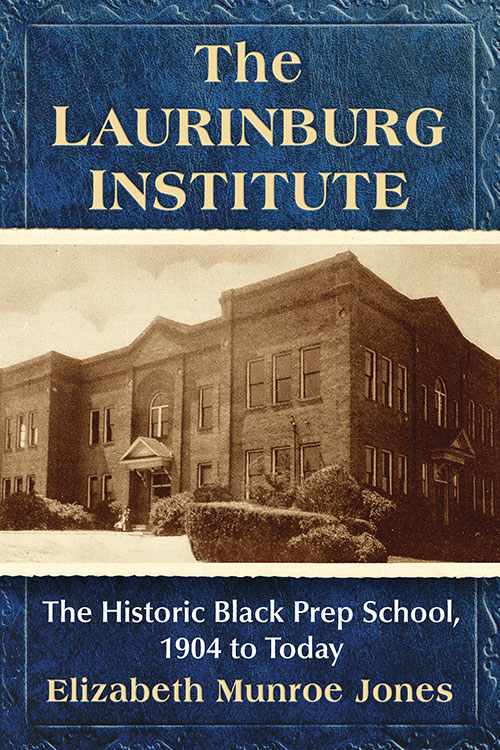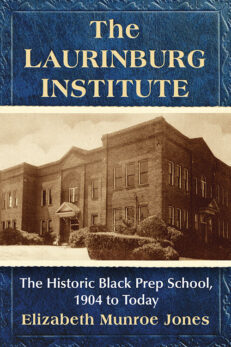The Laurinburg Institute
The Historic Black Prep School, 1904 to Today
$39.95
In stock
About the Book
For the white race it is almost impossible to comprehend what it took to lift blacks from the state of brutal slavery to their rightful place in society. Indeed, we are still grappling with that problem today. Starting from scratch has new meaning when you look at the beginnings of Booker T. Washington and Emmanuel and Tinny McDuffie, the founders of the Laurinburg Normal and Industrial Institute in 1904. How far they came has to be measured against where they began. Emmanuel McDuffie, the son of “none,” became the symbolic father of many. He did not flee to the relative safety of the North after the war but plunged deeper into the divided and often dangerous South. He was determined to build a place where he, his family, and his race could stand and thrive.
This 119-year history of the oldest private black prep school in the United States comes alive through extensive interviews and records now uncovered for the first time. Accounts of Jazz musician Dizzy Gillespie and NBA Hall of Famers Sam Jones and Charlie Scott, among many distinguished graduates and faculty members, paint a vivid picture. Ranked sixth nationwide among high schools in producing the most NBA players, Laurinburg Institute also sent more than 60 players to Division I college basketball teams all across the county. At least 50,000 students built a new world based on the firm foundation of Laurinburg Institute and four generations of the McDuffie family.
About the Author(s)
Bibliographic Details
Elizabeth Munroe Jones
Format: softcover (6 x 9)
Pages: 259
Bibliographic Info: 60 photos, appendices, notes, bibliography, index
Copyright Date: 2024
pISBN: 978-1-4766-9416-0
eISBN: 978-1-4766-5221-4
Imprint: McFarland
Table of Contents
Acknowledgments ix
Preface 1
Introduction 3
Part I—Slavery, Reconstruction and White Supremacy
1. Laurinburg, North Carolina (1729–1865) 10
2. Reconstruction and Republicans (1865–1898) 13
3. Red Shirts, Democrats and White Supremacy (1898–1900) 15
4. Walter Parsley Evans (1865–1938) 20
5. Booker T. Washington (1856–1917) 24
6. Emmanuel Montee and Tinny Ethridge McDuffie (1881–1983) 29
Part II—The Laurinburg Institute: Emmanuel M. McDuffie (1904–1953)
7. Laying the Foundation (1904–1917) 36
8. Raising Funds from the North for Southern Black Children 53
9. Educating the Public Within a Private Institution 59
10. Marshaling On: Buildings, Teachers, Programs and Students (1918–1953) 71
11. Phillmore “Shortie” Hall: A Teacher’s Point of View (1934–1945) 84
12. Dizzy Gillespie Offers a Student’s Account of the Institute (1933–1935) 96
13. Significant Others: Ray, Moncur, Jones, Covington, Swan, Johnson, and Collins 103
Part III—The Laurinburg: Frank H. McDuffie, Sr. (1954–1994)
14. The Cost and Legacy of the Institute to Public Education 116
15. Reinventing the Institute as a Private Prep School 121
16. Building Character and Confidence 128
17. Basketball Leads the Way 145
18. Holcombe Rucker and Earl “The Goat” Manigault 150
19. Charlie Scott, Charlie Davis, Chris Washburn and Beverly McDonald 158
Part IV—The Laurinburg Institute: Frank “Bishop” McDuffie, Jr. (1994–Present)
20. The Responsibilities of the McDuffie Legacy 168
21. Keeping the Institute Alive as Other Black Schools Close 172
22. The Women of the Laurinburg Institute 176
23. Campaigning to Get the Word Out 185
24. Basketball, Basketball, Basketball 191
25. Coach Chris Chaney and the Dream Team 196
26. Charter School and NCAA Woes 205
27. Struggling to Keep the Ship Afloat 208
Appendix 213
Chapter Notes 221
Bibliography 233
Index 241





